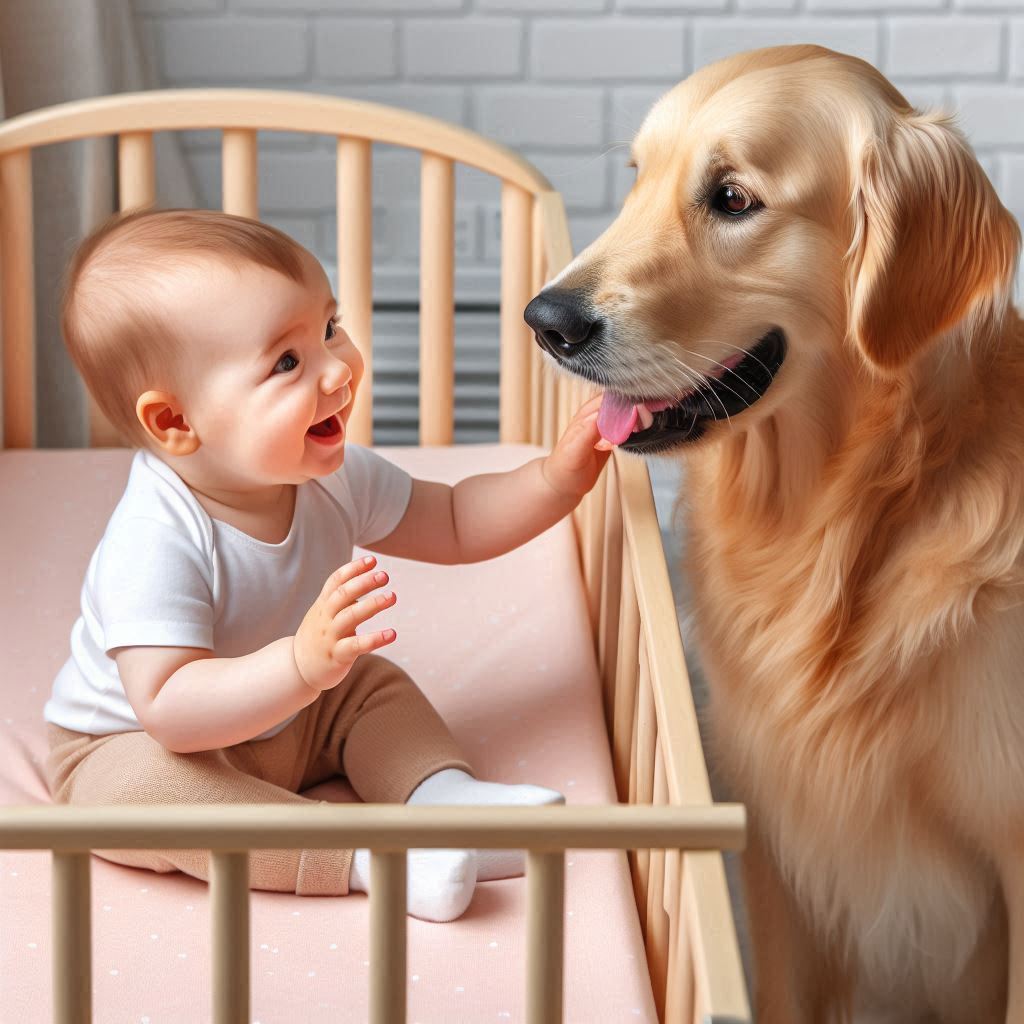In most cases, it’s unlikely that your dog sees your baby as prey. Understanding your dog’s natural instincts and behavior can help alleviate any concerns you may have. Here’s why your dog probably sees your baby as a new pack member rather than prey:

Natural Instincts
- Pack Mentality: Dogs are descended from pack animals with a strong instinct to protect their pack, including the young. Your dog might view your baby as a new member of the pack and feel the need to guard them rather than hunt them. This protective behavior stems from their ancestry, where pack survival depended on caring for each member.
- Size Difference: Most dogs can recognize the size difference between themselves and a human baby. Prey animals are typically smaller and weaker than the predator. Your baby, although smaller than an adult, is still much larger and differently shaped than typical prey, helping your dog distinguish them from prey animals.
Situations Where a Dog Might Perceive a Baby as a Threat
Despite the natural instincts that make dogs protective, there are situations where a dog might perceive a baby as a threat:
- Strong Predatory Drive: Certain breeds bred for hunting might have a stronger prey drive than others. These breeds may be more prone to chase moving objects or animals, making it crucial to monitor their behavior around babies.
- Lack of Socialization: If your dog hasn’t been properly socialized around babies, they might be fearful or unsure how to interact, leading to unpredictable behavior. Proper socialization helps dogs learn how to behave appropriately in various situations, including interactions with infants.
- Startled by Movement or Noise: A baby’s sudden movements or cries might startle a dog, especially if they are not used to them. Dogs that are easily startled may react defensively or with fear, which can lead to aggressive behavior.
Signs to Watch Out For
It’s important to be vigilant and recognize signs that indicate your dog might be uncomfortable or view the baby as a threat:
- Staring Intently: While staring can also indicate curiosity, prolonged intense staring can signal anxiety or uncertainty.
- Growling or Snapping: These are clear signs of aggression and should not be tolerated. Immediate intervention is necessary.
- Stiff Body Posture: A tense and rigid body posture can indicate that your dog feels threatened or uneasy.
- Excessive Barking: While barking can be a form of communication, excessive barking around the baby could indicate stress or fear.
How to Create a Safe and Positive Environment
To ensure the safety of both your baby and your dog, follow these steps to create a harmonious household:
- Gradual Introductions: Allow your dog to sniff articles of clothing or a blanket with the baby’s scent before any direct interaction. This helps your dog become familiar with the new addition in a non-threatening way.
- Supervision is Key: Never leave a dog unsupervised with a baby, no matter how gentle your dog seems. Supervision ensures that you can intervene if any signs of discomfort or aggression arise.
- Reward Gentle Behavior: When your dog interacts calmly with the baby, praise them and offer treats to reinforce positive behavior. Positive reinforcement helps your dog associate the baby with good experiences.
- Provide Your Dog with Attention: Continue to show your dog love and attention to avoid feelings of jealousy. Maintaining your dog’s routine and ensuring they feel valued can prevent negative behavior stemming from jealousy or neglect.
- Consult a Professional: If you have concerns about your dog’s behavior around your baby, consult a certified professional dog trainer for guidance. A professional can provide tailored advice and training to address any specific issues.
Conclusion
By understanding dog behavior, supervising interactions, and creating positive experiences, you can help your dog adjust to the new addition to the family and build a strong bond between them. Ensuring a safe and supportive environment for both your baby and your dog will lead to a harmonious and loving household.
